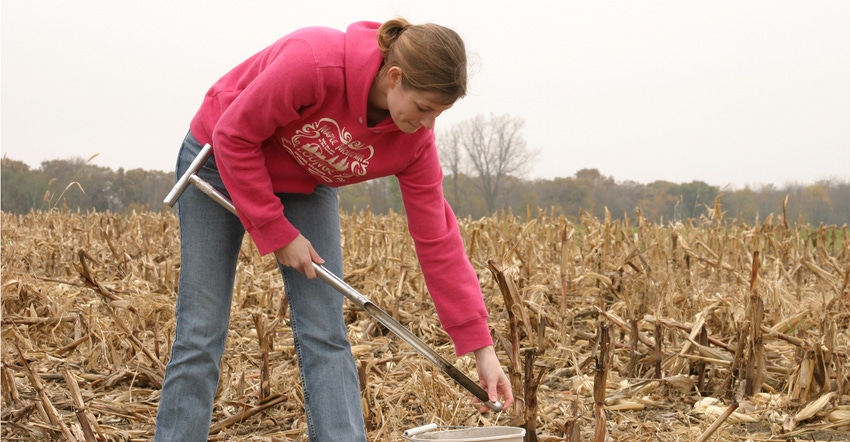October 18, 2018

For soybean farmers and agronomists doing soil fertility sampling and testing this fall, it’s also a great time to pull soil samples for soybean cyst nematode testing while you’re in the field. It’s the first step in actively managing SCN resistance, which is a growing problem for many soybean farmers, whether they realize it or not.
“With research showing that SCN populations are becoming resistant to the source of resistance [PI 88788] used in 95% of commercial soybean varieties, farmers can no longer assume that planting an SCN-resistant variety is controlling this pest,” says Sam Markell, North Dakota State University plant pathologist and leader of the SCN Coalition. “That’s why The SCN Coalition recommends that farmers know their nematode numbers.”
Know your SCN numbers
Soybean promotion boards in several states offer free SCN soil testing, so it may cost little to nothing to test your fields. States offering soybean farmers free SCN soil testing are Arkansas, Michigan, Minnesota, Nebraska, Ohio, South Dakota, Tennessee, Texas, Virginia, West Virginia and Wisconsin. “This list isn’t exhaustive, so check with your state soybean board,” Markell says.
In states that don’t offer cost assistance, SCN tests generally cost $1 to $2 an acre. The yield loss potential is often $10 to $20 per acre, so testing makes economic sense. “You can have yield losses of up to 30% from SCN with no aboveground symptoms,” he says.
Fall is a perfect time to sample fields where soybeans were grown this year, as well as fields planted to corn in 2018 and slated for soybeans next year. Greg Tylka, Iowa State University Extension plant pathologist, says, “You’ll get information on this year’s crop, as well as data to help you make management decisions next spring.”
Soil sampling process similar
The SCN sampling process is similar to soil fertility sampling, Tylka says. Use a soil probe that’s a 1-inch-diameter tube. Collect 20 cores or more from 6 to 8 inches deep.
Cores should be collected either in a zig-zag pattern, or you can pull cores from high-risk areas in the field. Those include entryways, areas with high soil pH, low spots and areas that have previously flooded, as well as areas in the field with unexpectedly low yields that you can’t explain.
Put the cores in a bag and mail them to a testing lab. A list of public and private testing labs serving each state is available at the SCN Coalition. Also, you can view a short video showing how the SCN problem evolved.
Source: SCN Coalition
You May Also Like




